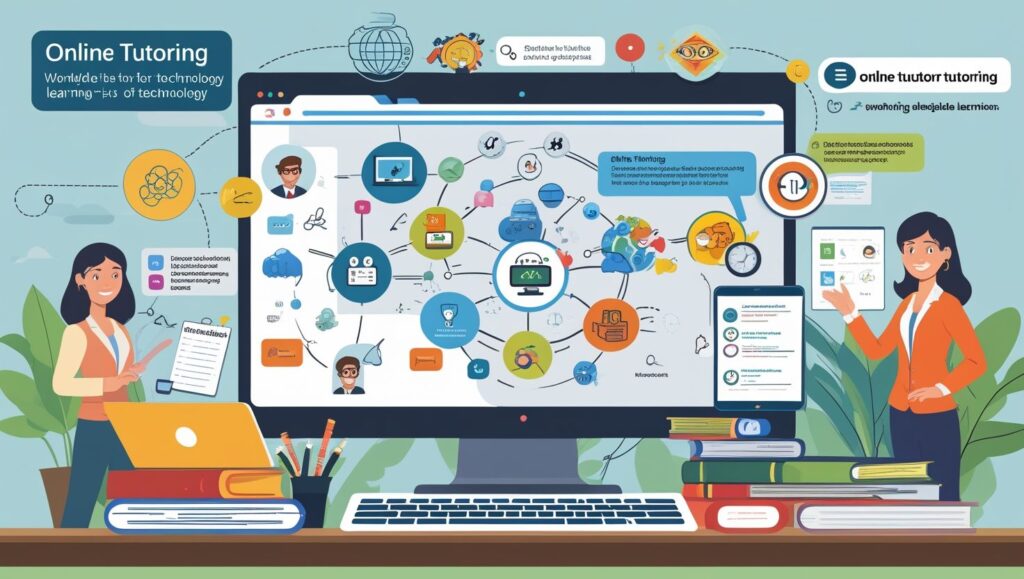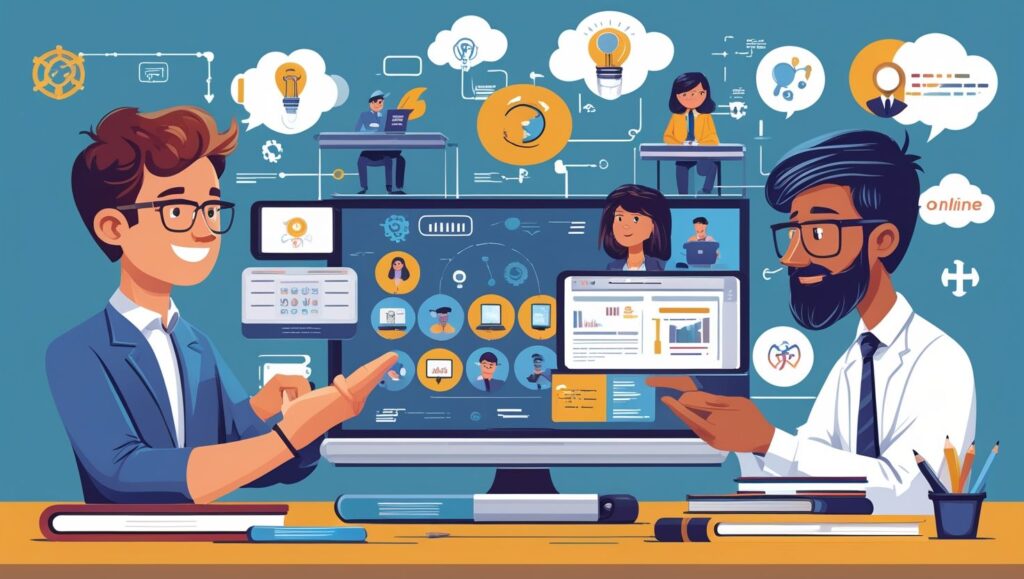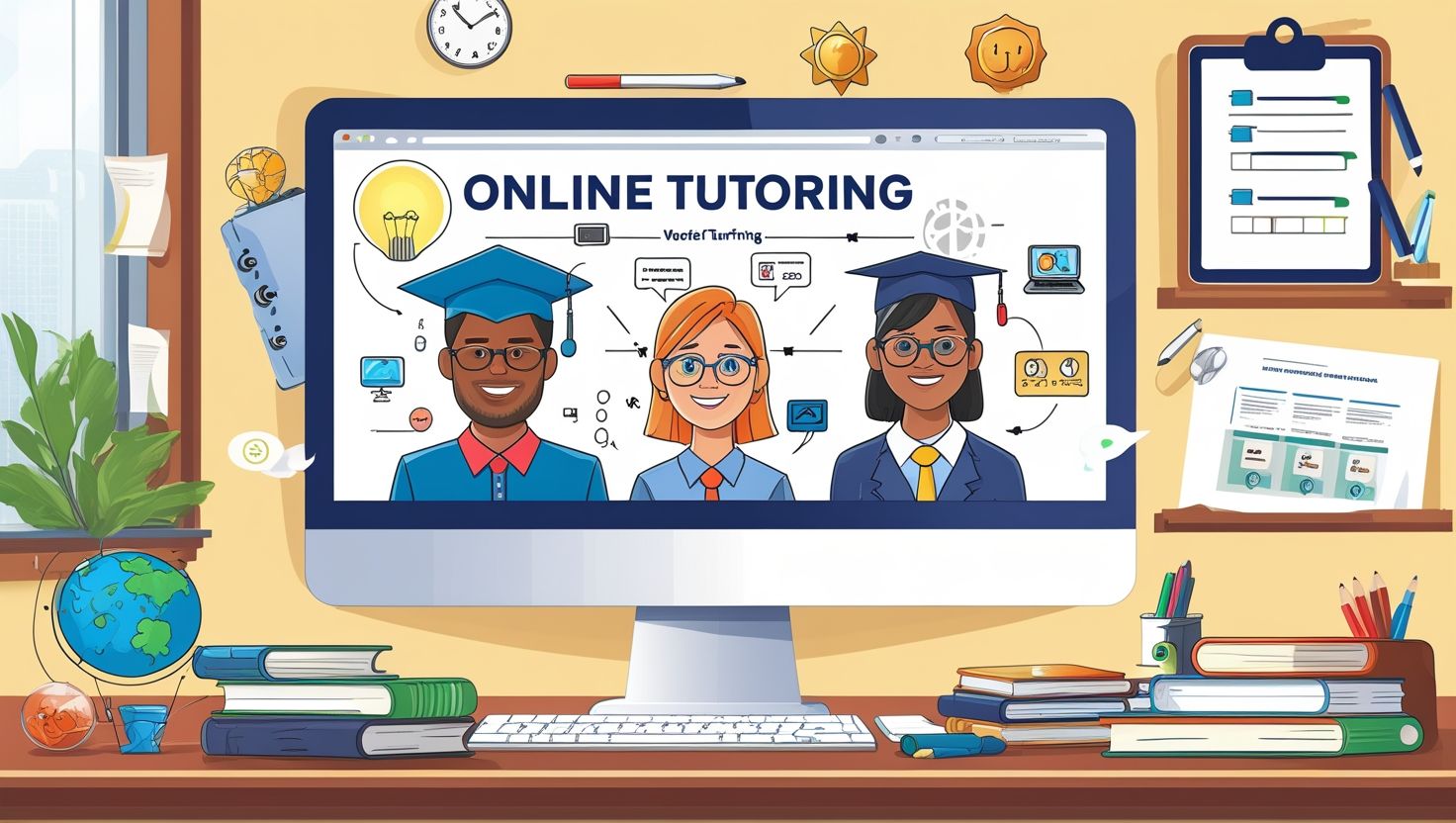Introduction
The use of technology in the form of online tutoring has transformed education in the digital age. With the rise of fast internet and advanced devices, learning is no longer limited to the classroom. Students can access resources and expert tutors from anywhere in the world. Online tutoring offers flexibility, personalized support, and interactive methods that were not possible in traditional teaching. Moreover, it allows learners to study at their own pace and revisit materials when needed. Teachers can also use digital tools such as video conferencing, interactive whiteboards, and AI-driven assessments to improve lessons. Therefore, technology creates opportunities for both tutors and students to engage effectively. It also reduces geographical barriers and increases accessibility for learners from diverse backgrounds. Consequently, online tutoring continues to grow as a reliable and innovative educational solution that supports lifelong learning in different fields of study.
Evolution of Online Tutoring
The concept of online tutoring has evolved significantly over the past two decades. Initially, it was limited to simple chat-based guidance or pre-recorded video lectures. However, advancements in digital platforms and faster internet connections have made real-time interaction possible. Today, tutors use platforms that include live video sessions, collaborative documents, and virtual classrooms. Students can share screens, ask questions, and receive instant feedback. Furthermore, the rise of artificial intelligence has allowed systems to recommend personalized study plans. Unlike in the past, where learning was one-directional, online tutoring now promotes two-way communication and active participation. Additionally, cloud storage and learning management systems ensure that study materials are easily accessible. This evolution has expanded opportunities for learners across different regions. Therefore, the modern form of online tutoring is not only convenient but also highly effective in meeting the individual needs of students. It represents a major milestone in the advancement of global education.

Flexibility and Accessibility
One of the main benefits of online tutoring is flexibility and accessibility. Students no longer need to travel long distances to meet teachers. Instead, they can connect with tutors through laptops, tablets, or even smartphones. This flexibility helps learners manage their time effectively, especially those balancing school, work, and family responsibilities. Moreover, online tutoring provides access to a wider pool of experts. A student in a small town can learn from a tutor located in another country. Consequently, geographical boundaries do not restrict the learning process. Furthermore, online tutoring supports learners with different schedules by offering sessions at convenient times. For students with disabilities, it provides additional accessibility options, such as captioned lessons or recorded videos. As a result, education becomes more inclusive and learner-friendly. Therefore, flexibility and accessibility remain central advantages of online tutoring and explain why many students prefer this form of education.
Personalized Learning Experience
Technology has made it possible for tutors to provide a personalized learning experience. Unlike traditional classrooms, where teaching is often standardized, online tutoring can be tailored to meet each learner’s needs. Tutors can adjust the pace of instruction depending on a student’s abilities and preferences. Additionally, digital tools allow progress tracking, so both students and tutors can identify strengths and weaknesses. This helps in creating customized study plans that target specific areas of improvement. Moreover, interactive quizzes, multimedia content, and adaptive learning software further enhance personalization. Students also feel more comfortable asking questions in one-on-one online sessions compared to crowded classrooms. Consequently, they gain confidence and achieve better results. Personalized learning also encourages motivation, as learners can see clear improvements in their performance. Therefore, online tutoring demonstrates how technology supports education that focuses on individual growth rather than a one-size-fits-all approach.
Cost-Effectiveness of Online Tutoring
Another important advantage of online tutoring is cost-effectiveness. Traditional tutoring often requires additional expenses, such as transportation costs, textbooks, and physical learning spaces. Online tutoring eliminates many of these costs, making education more affordable for families. Additionally, many platforms provide free trial sessions, discounted packages, or even low-cost group tutoring options. Since tutors can reach more students through digital platforms, they can offer lessons at competitive rates. Furthermore, digital resources like e-books, recorded lectures, and online practice tests are often cheaper than printed materials. This makes quality education accessible to a larger audience. Students from different financial backgrounds can benefit from the same high-quality instruction without excessive spending. Moreover, parents save time and money by avoiding commutes. Therefore, the cost-effectiveness of online tutoring contributes to its popularity worldwide. It ensures that financial limitations do not prevent students from receiving proper academic support.
Role of Technology Tools
Technology tools play a vital role in making online tutoring effective and engaging. Tutors use video conferencing applications such as Zoom, Google Meet, or Microsoft Teams to conduct live sessions. These tools provide interactive features like screen sharing, breakout rooms, and chat functions that encourage participation. Additionally, virtual whiteboards allow real-time problem-solving and visual explanations. Artificial intelligence tools further enhance learning by offering automated assessments and performance tracking. Moreover, gamification features make sessions more enjoyable and encourage active participation. Tutors can also use learning management systems to organize lessons, assignments, and tests efficiently. Cloud-based storage ensures that students have access to resources anytime. Consequently, technology tools bridge the gap between traditional and digital education. They not only simplify teaching but also make learning more interactive. Therefore, these tools are essential for delivering high-quality online tutoring that engages students effectively.
Overcoming Learning Barriers
Online tutoring helps students overcome several learning barriers. In traditional classrooms, learners may face issues such as limited teacher attention, large class sizes, or rigid schedules. Online tutoring addresses these challenges by providing individual attention and flexible lesson timings. Moreover, language barriers can be reduced through translation tools and multilingual tutors. Students with learning difficulties also benefit from specialized digital resources, such as text-to-speech applications and interactive exercises. Additionally, shy students who hesitate to ask questions in class often feel more comfortable in online one-on-one sessions. This environment allows them to express themselves freely. Furthermore, recorded lessons help students revisit topics as many times as needed, which is especially helpful for slow learners. Consequently, online tutoring creates a more inclusive and supportive environment. Therefore, it removes obstacles that often prevent students from reaching their full potential in traditional learning settings.

Teacher-Student Interaction Online
Effective teacher-student interaction is a crucial component of online tutoring. Technology allows tutors and learners to connect instantly, regardless of location. Video conferencing ensures face-to-face communication, making the experience more personal. Moreover, tutors can use interactive tools such as polls, live chat, and breakout sessions to encourage participation. This fosters engagement and helps build a strong learning relationship. Furthermore, online tutoring often includes feedback systems that allow teachers to provide instant corrections and suggestions. Students also benefit from flexible communication, as they can reach their tutors through messaging platforms outside of scheduled sessions. This increases support and guidance. Additionally, digital platforms encourage collaborative learning through group discussions and peer-to-peer interaction. As a result, online tutoring promotes not only academic growth but also social learning. Therefore, the teacher-student interaction facilitated by technology is essential for ensuring a positive and productive online learning experience.
Future of Online Tutoring
The future of online tutoring looks highly promising as technology continues to advance. With the growth of artificial intelligence, tutoring platforms will become even more personalized. AI will analyze student performance and recommend customized learning paths. Virtual reality and augmented reality are also expected to make lessons more immersive, especially in science and technical subjects. Moreover, online tutoring will expand further into rural areas as internet access improves worldwide. Educational institutions are likely to adopt hybrid models that combine classroom teaching with online support. Furthermore, the demand for online tutors will increase as students and parents recognize its flexibility and effectiveness. Lifelong learning will also be supported, as professionals use online tutoring to upgrade their skills. Therefore, the future of online tutoring is not just limited to academics but also professional development. It will remain a key pillar in shaping education for generations to come.
Conclusion
The use of technology in the form of online tutoring has revolutionized education in numerous ways. It provides flexibility, affordability, and personalized learning experiences that benefit students worldwide. Technological tools enhance teacher-student interaction and make lessons more engaging. Additionally, online tutoring breaks down barriers by improving accessibility and inclusivity. With continuous advancements such as artificial intelligence and virtual reality, the potential of online tutoring will only grow further. It empowers students to learn effectively, regardless of location or circumstances. Moreover, it supports lifelong learning, allowing individuals to develop both academic and professional skills. Consequently, online tutoring has become an essential part of modern education. Therefore, the integration of technology and tutoring ensures that quality education is available to everyone. It continues to redefine the learning process, making it more effective, inclusive, and innovative in the global context.
References
- Allen, I. E., & Seaman, J. (2017). Digital Learning Compass: Distance Education Enrollment Report 2017. Babson Survey Research Group.
- Dhawan, S. (2020). Online learning: A panacea in the time of COVID-19 crisis. Journal of Educational Technology Systems, 49(1), 5-22.
- Kauffman, H. (2015). A review of predictive factors of student success in online learning. Research in Learning Technology, 23.
- Sun, A., & Chen, X. (2016). Online education and its effective practice: A research review. Journal of Information Technology Education: Research, 15, 157-190.
- Zhao, Y., Lei, J., Yan, B., Lai, C., & Tan, H. S. (2005). What makes the difference? A practical analysis of research on the effectiveness of distance education. Teachers College Record, 107(8), 1836-1884.
